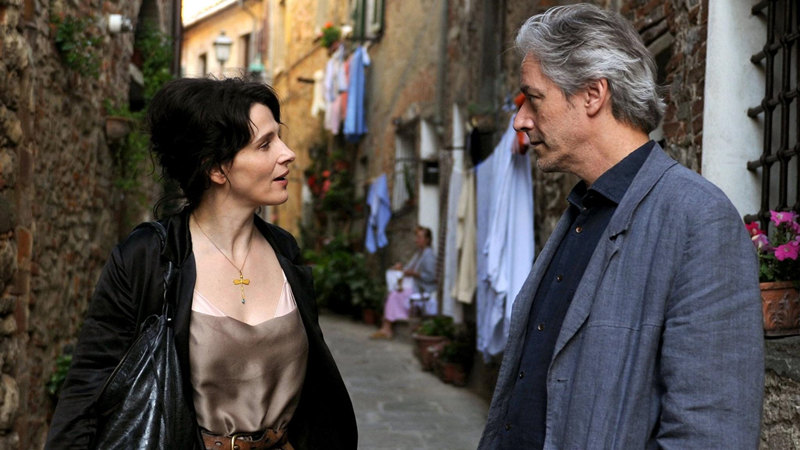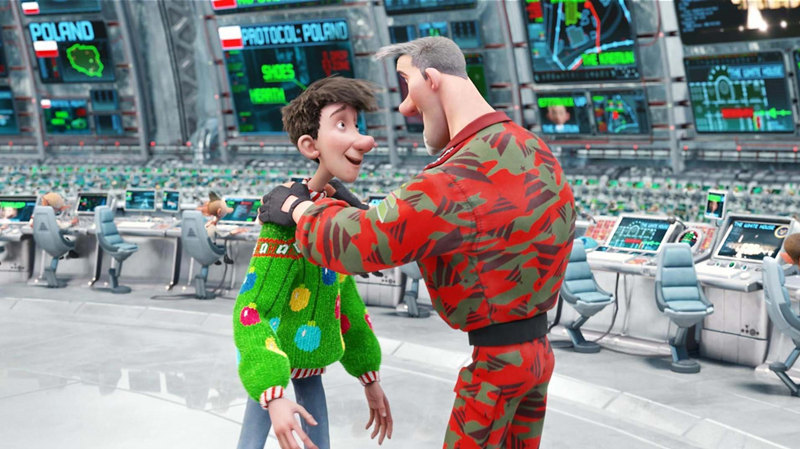“Living in a zoo can be very sad
People stare at you and make you mad.
Oh how I wonder what they would do
If animals stared at them like they were in a zoo?”
-sung by Chris Peterson in the “Zoo Animals on Wheels” episode of “Get A Life”
“Bestiaire” (2012) takes place primarily at Quebec’s Parc Safari where visitors can choose from a variety of “adventures” either on foot or in the plush comfort of their vehicles as they gawk at wildlife from across the globe. Denis Cote’s haunting new film provides the wildlife a chance to gawk back.
Contrary to my faulty initial impression based on a screening at the Toronto International Film Festival, no more than ten percent of the screen-time in this sleek 72-minute movie is actually devoted to animals looking directly into the camera. Yet it is this gallery of implacable gazes that provides the film with such an enigmatic aura.
“How do you like it
When we stare at you?
It doesn’t feel good.
Now isn’t that true?”
-”Zoo Animals on Wheels” (cont.)
Werner Herzog claims that he finds chickens frightening because to look into their eyes is to see “a kind of bottomless stupidity, a fiendish stupidity.” I suspect few people will see such stupidity in the eyes of the cows or ostriches staring back at them in “Bestiaire,” but the imagined exchange of gazes (they aren’t actually seeing you, dear viewer) between animal and human invites an array of responses. Stupid, no, but perhaps still bottomless. If you are the least bit engaged, you must choose something to fill that abyss.
The bison, perhaps not even aware of the camera, surely intends nothing with its placid, prolonged stare, but add in the knowledge that these animals are all maintained for display, and perhaps those bovine pupils convey an accusation. Do you feel the need to defend yourself against that withering glare? Maybe you even feel a sense of shame. It doesn’t feel good, now isn’t that true?
Perhaps, maybe and a few question marks to boot. I have used equivocal language because viewers will bring their own perceptual and emotional baggage to Cote’s experiment. Where some see profundity in a rheumy cow’s eye looming large even on a small screen, others will contemplate little more than when the movie will end. I can only say that the film has lingered with me from the festival, and after watching it two more times on this Zeitgeist DVD I still cannot stop thinking about it.
Sometimes the animals faces are framed perfectly, but other times we are reminded that the mechanical gaze of the camera is stupid as well. In one shot, an ostrich’s head barely peeks above the bottom of the frame, his face popping into partial view only a few times; in another, just a portion of an animal’s horn pokes through the side of the frame. It’s an unsettling effect, but I hesitate to read too much (there I go equivocating again) into it; perhaps the animals just refused to hit their marks.
“Bestiaire” features plenty of human animals as well. Indeed the film opens with a series of close-ups of people looking at… something. It turns out they are sketching a stuffed deer. Later we see a taxidermist at work, the end product being an array of perfectly mounted deer heads with those beady, bottomless eyes just staring back at us. OK, I admit it, we’re guilty! We’re guilty!
Guilty of what? I will not presume to speak for M. Cote whose film is too complex to be reduced to a single thesis statement. Many of the men and women of the Parc Safari depicted in the film perform their jobs dutifully and treat the animals gently. Yet we are also privy to disturbing sequences like a zebra thrashing loudly in his pen (the film is almost wordless, but the sound design is still crucial and quite marvelous), a lion rattling the lock on his cage, and a terrified hyena squeezed into a tight space by metal bars as keepers administer an injection.
If the film is, in part, intended to be a trip to the zoo, it takes the time both to show us aspects of the facility that we would not witness on a typical visit and, more importantly, to make us actively consider our casual acts of voyeurism, to challenge a human-centric perspective. The animals are looking too. Do they see “bottomless stupidity” in your eyes? Are all of our gazes (animal, human, camera) equally unknowing? Embrace the void.
“Bestiaire” agitates the mind in the most productive and rewarding of ways. I find it easy to get lost in its network of glances, in its institutional procedures, and inside its walls and glass enclosures. I am equally fascinated and unnerved by the experience, which is why I will surely return again. And it is easily one of the best films of 2012.
Video:
The film is presented in a 1.78:1 anamorphic transfer. The SD transfer from the HD source is generally sharp, though not flawless. I’d have loved a Blu-ray release of this title, but this version will suffice.
Audio:
The Dolby Digital Stereo audio mix doesn’t have to deal with much dialogue, but sound design is a major evocative element in the film, including sometimes unidentifiable off-screen noises. The mix captures these effects well enough, though it is not particularly dynamic. No subtitles are provided.
Extras:
The only extra is an 11-mintue interview with director Denis Cote, conducted on Oct 12, 2012. He speaks about his contract with the Parc Safari, and their response to the final cut.
Film Value:
This was a difficult review to write because “Bestiaire” transfixes me for reasons I have difficulty articulating. Maybe it’s as simple as the fact that there may be nothing I respond to more strongly in film than shots of animals looking at the camera: “Au hasard Balthazar” (1966), “Nenette” (2010), that sheep in “Sweetgrass” (2009), I love ’em all.
And just in case anybody thinks my quoting from “Get A Life” is an effort to cast this film as a comedy, I remind you that “Get a Life” is not just a sitcom, but a tragic portrait of rapidly deteriorating psychosis that builds to an inevitable apocalypse. For real.


